- Home
- Blog
- Innovation
- Brands nailing it with Augmented Reality
Brands nailing it with Augmented Reality
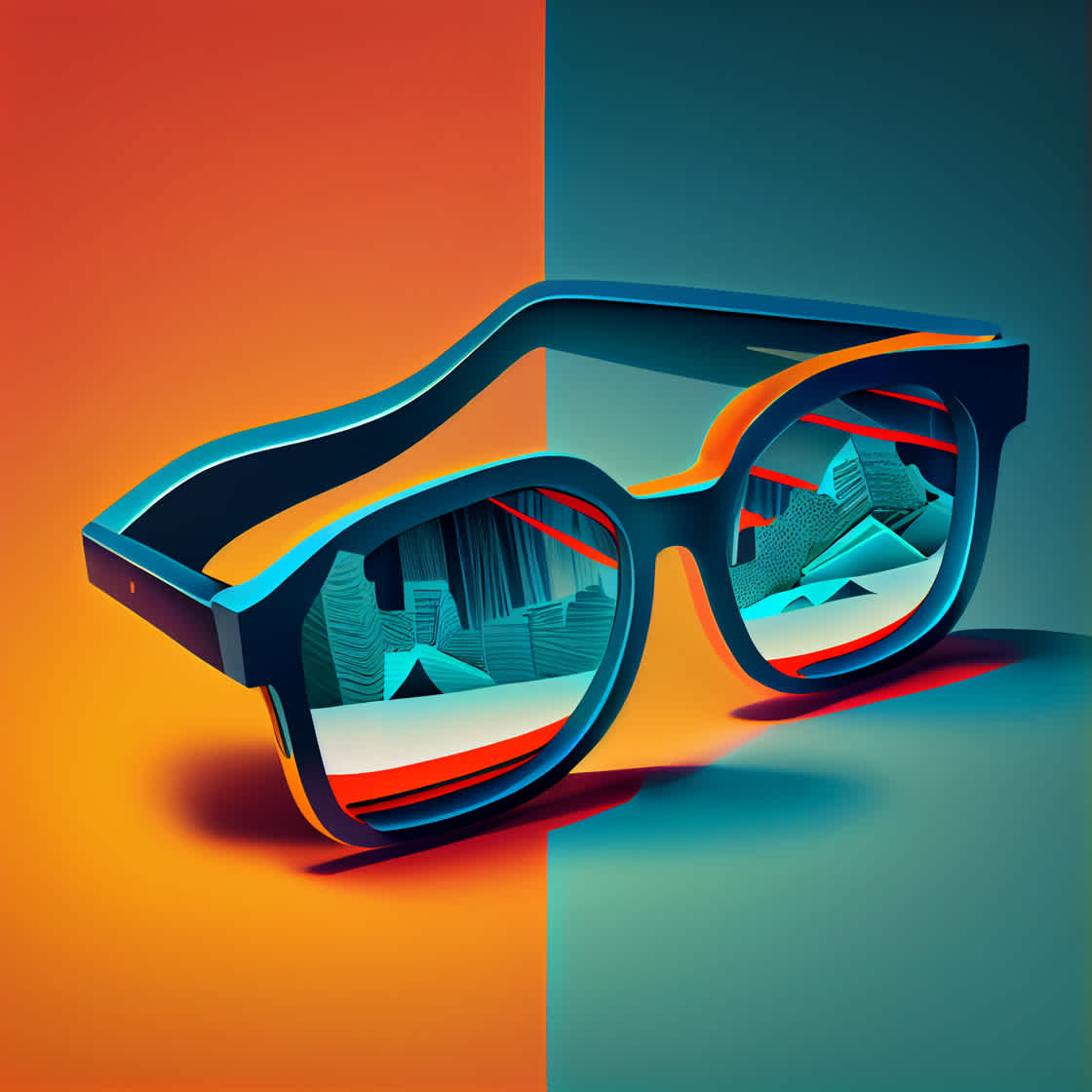
On this page
It might not feel like it, but augmented reality (AR) has been around for a long time: the technology was developed in the 90s, long before the social media era, but it only started reaching the general public since smartphones became increasingly ubiquitous in our lives.
Through popular experiences like Snapchat filters or Pokemon Go, we’ve grown used to adding layers of digital information to our reality and AR is now naturally finding its place in the digital marketing strategies of a growing number of brands. And rightfully so: it is estimated that the market of AR will grow from 11 billion (USD) in 2018 to $60 billion by 2023! (MarketsandMarkets). According to the report, that growth will be driven by demand in healthcare, retail and ecommerce.
The array of AR use is really wide but today we’d like to highlight some of the coolest ways brands have been leveraging AR to enhance customer experience, both online and offline.
What is Augmented Reality?
Augmented Reality is a technology that allows us to layer digital components into our physical reality, often done through a viewing device such as a tablet, a smartphone or even AR glasses.
AR is used to enhance the world around us with digital technology, by opposition to Virtual Reality (VR) where you are fully immersing yourself in a new reality, typically through a headset.
Filters or “try on” applications
Since the rise of eCommerce, brands have been invested in finding ways to help customers make more informed product decisions when shopping online. In this regard, Augmented Reality provided a helpful way to bridge the gap between physical and online shopping through the development of “try-on” applications: augmented filters that can help customers visualize how they would look wearing a certain product.
From glasses, to clothes, shoes or make up, the applications of try-on filters are endless. What’s at stake for retailers? Boosting customer satisfaction and hopefully reducing part of the many, many returns of online shoppers.
And if a few years back AR experience could feel more gimmicky than helpful, brands stepped up their game and now offer really convincing filters. Among them: Warby Parker, Dior, Nike, Sephora or even Gucci.
Gucci
Last summer, Gucci added an AR feature to its app to let customers virtually try on their latest sneakers.
All users had to do, once the feature selected, was to point the phone camera downwards to get an overlay and then swipe between the 19 different models of their Ace collection. Thanks to foot movement tracking, the user was able to check the sneakers out through different angles as the overlay moved in real time.
The app allowed users to snap a picture to share their look on social media or direct them onto the Gucci eCommerce site to make a purchase.The virtual try-on filter was developed by Wannaby, a start up specialized in AR applications for retail who also collaborated with brands like Nike, Adidas or Puma. One truly awesome feature they developed for the Nike app was the possibility to scan your feet to make sure you picked the right shoe size.
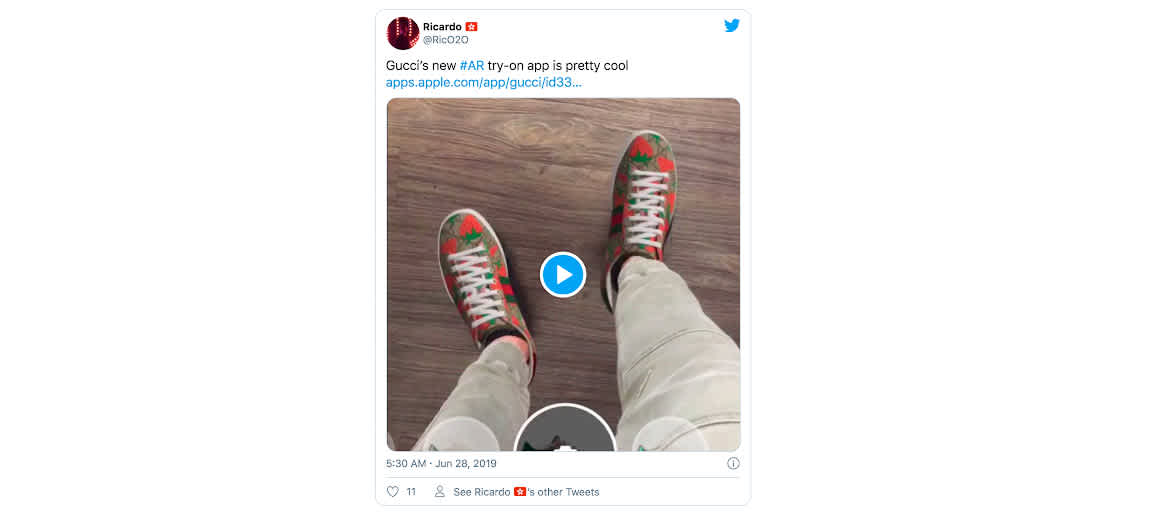
Ideally, we’d love to see a brand offer both features! Combining a scanner to guide customers on sizing and a try on filter to get a sense of the look could prove to be a very effective combo, if you ask us!
Other examples of try-on filters include...
Dior
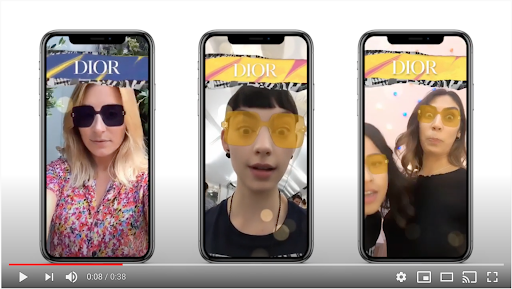
Sephora
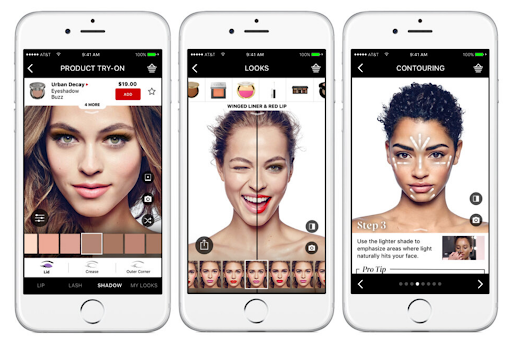
Embedded product experiences
Another interesting application of Augmented Reality for brands lies in embedded experiences, allowing customers to experience a product directly into their physical environment. That’s a particularly handy feature for home-interior products, where visualizing volumes can be quite tricky for the human eye... even with measurements!
Will this couch be too deep? That bed frame too high? Stress no more: brands like Amazon, Wayfair, Magnolia and Ikea embraced AR to offer 3D renderings of their products.
Ikea
Ikea has been looking at ways to offer 3D previews of their products for years but it’s really with the launch of their dedicated “Ikea Place” app in 2018 that they were able to elevate their online experience.
The app allows customers to visualize pieces of furniture into their space, after having scanned it beforehand with their phone in order to measure it. The render is really realistic thanks to a guaranteed 98% accuracy in scale and real time reactions to light and shadows.
With this app, Ikea can achieve two important goals:
eliminate everybody’s dreaded experience of buying and assembling a piece of furniture only to discover it won’t fit;
Inspire customers to browse their catalogue and easily try hundreds products in their homes, creating an engaging and enjoyable user experience likely to drive conversions.
Augmented Showrooms
Augmented Reality can also be used to virtually recreate in-store experience from anywhere - as well as to enhance offline shopping experience.
Kohls
Earlier this spring, Snapchat teamed up with department store chain Kohls to offer users of the messaging app the possibility to browse their collection in a virtual store setting.
With the majority of Kohls’ digital sales traffic coming from mobile devices, partnering with Snapchat to create an alternative shopping experience is a clever attempt at capturing part of that audience.
To access the virtual showroom, users had to pick the Kohls filter in the snapchat app, which acted as a shopping portal. From there, customers could then browse the collection, mix and match items to see if they paired well together and add them to their basket, all while remaining in the messaging app.
While this is a creative way to drive traffic to their eCommerce website, we can wonder how convincing Virtual Reality experiences are on smaller devices like smartphones and if the future of virtual shopping won’t require customers to have a VR headset at home.

Lego
Conversely, augmented reality has also been used by brands to enhance brick and mortar shopping experience or create surprising pop-up events.
That’s what Lego did last year to promote their first ever clothing line for adults, prior to London Fashion Week: they teamed up with Snapchat to open an empty store with just virtual clothes in it.
The pop-up store contained nothing more than snapcodes, guiding shoppers throughout the store in search of codes to access all the features of that AR shopping experience, including:
An interactive DJ booth,
A LEGO bouncer,
Arcade games,
Limited edition Lego wear for purchase.
With that event, Lego was targeting its cool, urban fanbase. And with 70% of Snapchatters engaging daily with AR, we can anticipate the transition to AR eCommerce to feel quite natural to that demographic.
On top of driving sales, the event was designed in an effort to create a memorable brand experience.
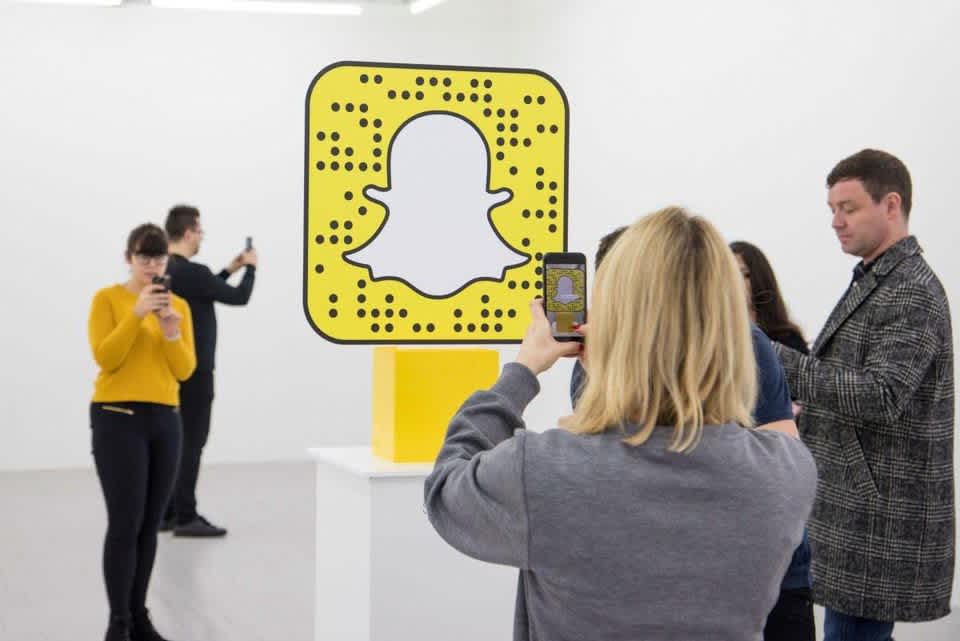
Augmented Windows
Another way that AR has been creating more engagement towards brands, is through augmented windows. Whether it is through AR mirror allowing customers to try on products without even entering the store, or simply to extend the visual storytelling of a brand, AR can expand the physical boundaries of retail spaces to reach more potential customers.
Louis Vuitton
Case in point with the AR window display created by Dr. Helen Papagiannis (XR expert who specializes in creating augmented experiences for brands) for Louis Vuitton.
Inspired by their famous monogram pattern, she designed an AR extension of the Louis Vuitton window display in Toronto. Viewable and shareable without a special app, her demos were available directly in Apple AR Quicklook.
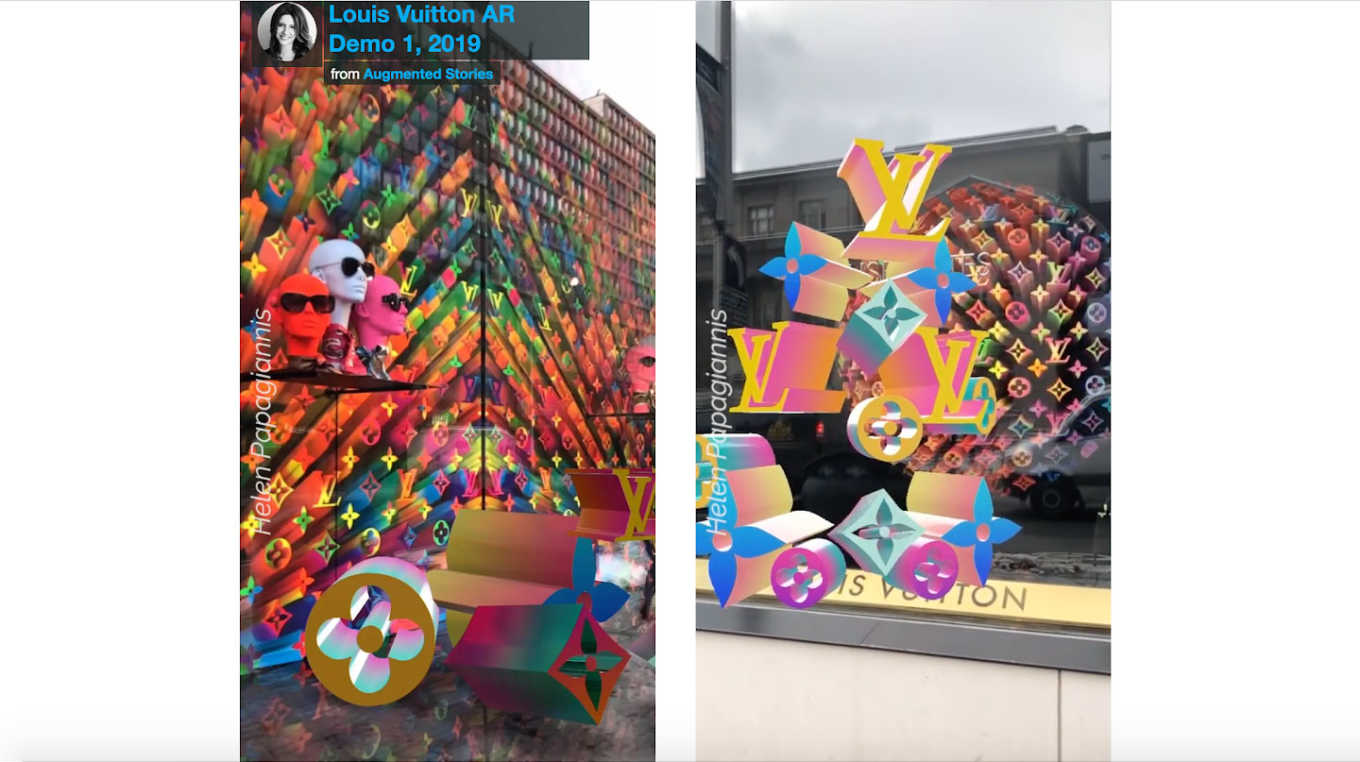
She created multiple demos to extend and enrich the brand’s visual identity: from playful window elements roaming free in the streets to 3D art installations. If her creations were solely developed to engage and immerse customers in Louis Vuitton’s visual identity, Augmented Windows can have very pragmatic applications too.
The technology was for instance used by Timberland to create a virtual fitting room and place it in the window to attract more foot traffic. Thanks to AR, passers-by could virtually try on outfits without even entering the store: they simply had to stand in front of a camera and play with the virtual version of themselves appearing on a large screen.
Whether offline or online, AR is becoming a mainstay for retailers as it enables them to better engage with their audience and offer a more immersive experience. From applications meant to boost ecommerce revenue like try-on filters, to those helping brands bring novelty and excitement to their brick and mortar locations, the possibilities of AR seem endless and we are looking forward to seeing which AR innovations will shape the future of commerce in the years to come!
AR data
As per recent data, by 2023 there will be an estimated 2.4 billion mobile augmented reality (AR) users worldwide, a rise of 2.2 billion from the 200 million seen in 2015. Source: https://www.statista.com/statistics/1098630/global-mobile-augmented-reality-ar-users/
MarketsandMarkets is forecasting that the market for AR will grow from $11 Billion (USD) in 2018 to a whopping $60 Billion by 2023.The report, titled Augmented Reality and Virtual Reality Market – Global Forecast to 2023 predicts that demand for AR software and devices in healthcare, retail and e-commerce will continue to drive growth and investment in the AR market.



